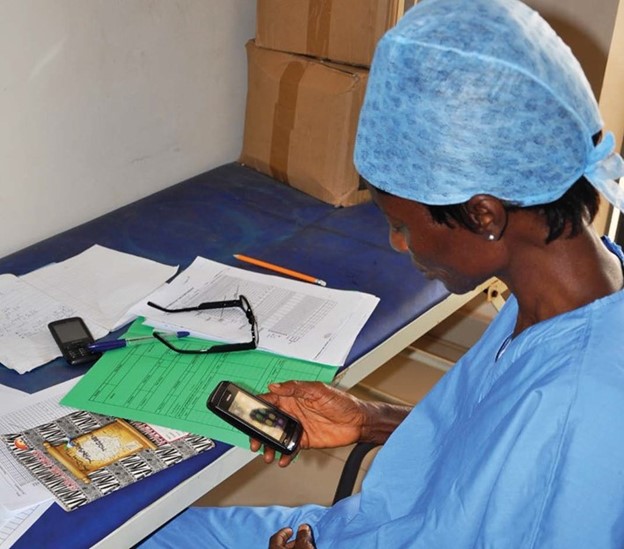Taylor Snyder
Founder and Executive Director, Maternal & Infant Health Consulting

May 10, 2022
Founder and Executive Director, Maternal & Infant Health Consulting
Technical Director, Demographic Research
A special feature from the Digital Health Compendium showcases updates to 16 case studies, all focused on family planning and digital health initiatives. These case studies were originally released as part of the now-dormant mHealth Compendium. In the decade since the launch of the mHealth Compendium, some of the studied initiatives have expanded in scope and scale, while others have become inactive. From these updated case studies, seven lessons emerge on sustainability and scalability.
[Note: In 2021, PACE transitioned leadership of the Compendium to The Medical Concierge Group (TMCG), a digital health and telemedicine company based in Uganda.]
For sustainability of country-level digital health initiatives for family planning programs, the most critical element is the involvement of the Ministry of Health (MOH). Programs must be approved by, and ideally designed in partnership with, the MOH before implementation. This is especially vital as more countries mandate that digital health tools be hosted, managed, and maintained in-country. In some cases, solutions may be designed with national rollout in mind to ensure that key components are fully integrated into practice standards and government management structures. When changes to funding occur (for example, when a donor-funded project ends), political will and government investment play an essential role in determining whether—and for how long—family planning activities will continue.
“The most important stakeholder … is the Ministry of Health in the country in which mHero is implemented.”—Case Study: mHero
Many behavior change communication programs are mobile-based—that is, delivered by mobile phone in a variety of formats including audio, photo, web access to online content, and text. As funding will always be central to sustainability, mobile-based programs should consider using revenue-sharing models or public-private partnerships to fund programs from their own revenue sources. One example is a revenue-sharing model in which some subscribers are charged a fee that funds their use of an app-based service and subsidizes use for those who are unable to pay for the service. When planning fee-for-service models, programs should anticipate changes in the technological landscape that may lead to a decrease in demand for paid services—for example, competitors entering the market or individuals’ reluctance to pay for app-based services.
“Aponjon uses innovative financing models, leveraging Corporate Social Responsibility/philanthropic funding at local and global levels.”—Case Study: Aponjon
Adaptability is critical. In some cases, digital solutions are introduced with a narrow focus, such as enhancing Ebola response measures in West Africa. But the need for disease-specific tools changes over time, so digital solutions must be adapted to support broader health system needs, such as capacity building for health care workers or integrated supply chain tracking. For example, if programmatic research reveals the target audience has a different and more pressing health need than the original program design, changing the focus of a digital solution—even if that means expanding beyond family planning—can better serve the audience.
“Countries will be able to more easily adapt the reference [family planning] module to suit their specific needs and requirements instead of developing a solution from scratch.”—Case Study: WHO Family Planning Reference App

Technology solutions that are designed to be “user elastic”—meaning they can be pared down to the simplest tools or dialed up to more complex and innovative capabilities—can be meaningfully used by a wide range of people. Designing a solution with elasticity in mind promotes scalability.
“No new handsets, software, or technical skills are required for target groups to use the project’s services, allowing accessibility at scale from the outset.”—Case Study: Kilkari, Mobile Academy, and Mobile Kunji
Widespread uptake—that is, adoption of a solution by a large number of people or proportion of an audience—is the essence of scaling. Uptake depends on usefulness: A digital solution must solve a real-life problem for end users. In many cases, users are frontline health care workers, who may find new solutions complicated to incorporate into their work. Ensuring that the solution has clear benefits—such as time savings, reduced effort, lower cost, or faster communication—can encourage uptake. Uptake also depends on motivation: Framing a new solution as part of a user’s essential job duties can boost acceptance.
“Preliminary results from the closed pilot indicate a 94 percent average reduction of time spent ordering and managing supplies.”—Case Study: DrugStoc
A key component to scale-up—gaining more users, distributing more products, serving more geographies—is engaging partnerships across a diverse array of actors. Critical considerations are partner selection and a thorough understanding of the systems that may be integrated together.
“Partner selection and thoroughness in understanding the systems that will be integrated together are important considerations to the success of a project.”—Case Study: CycleTel Family Advice and CycleTel Humsafar
Digital solutions focused on family planning can succeed on a greater scale if they integrate with solutions that are used more broadly across the health sector. For example, custom-built solutions can be repurposed by embedding them within DHIS2 or other health information management systems. Greater interoperability (the ability of multiple digital health solutions to exchange and use each other’s information) expands the possible use cases for digital health solutions.
“Building cStock within DHIS2, and making it interoperable with the Kenya Health Information Systems (KHIS), facilitated rapid uptake and adoption by MOH given that KHIS is their system of choice.”—Case Study: CStock Supply Chains for Community Case Management
Learning lessons from what has worked and not worked in previous family planning-focused digital health projects is important for improving sustainability and scalability in future projects. Lessons gained through these updates to the mHealth Compendium’s case studies can support evidence-based design and implementation for all future work in this field.
Note: A version of this piece first appeared in the Knowledge SUCCESS blog. It has been modified slightly for PRB.
